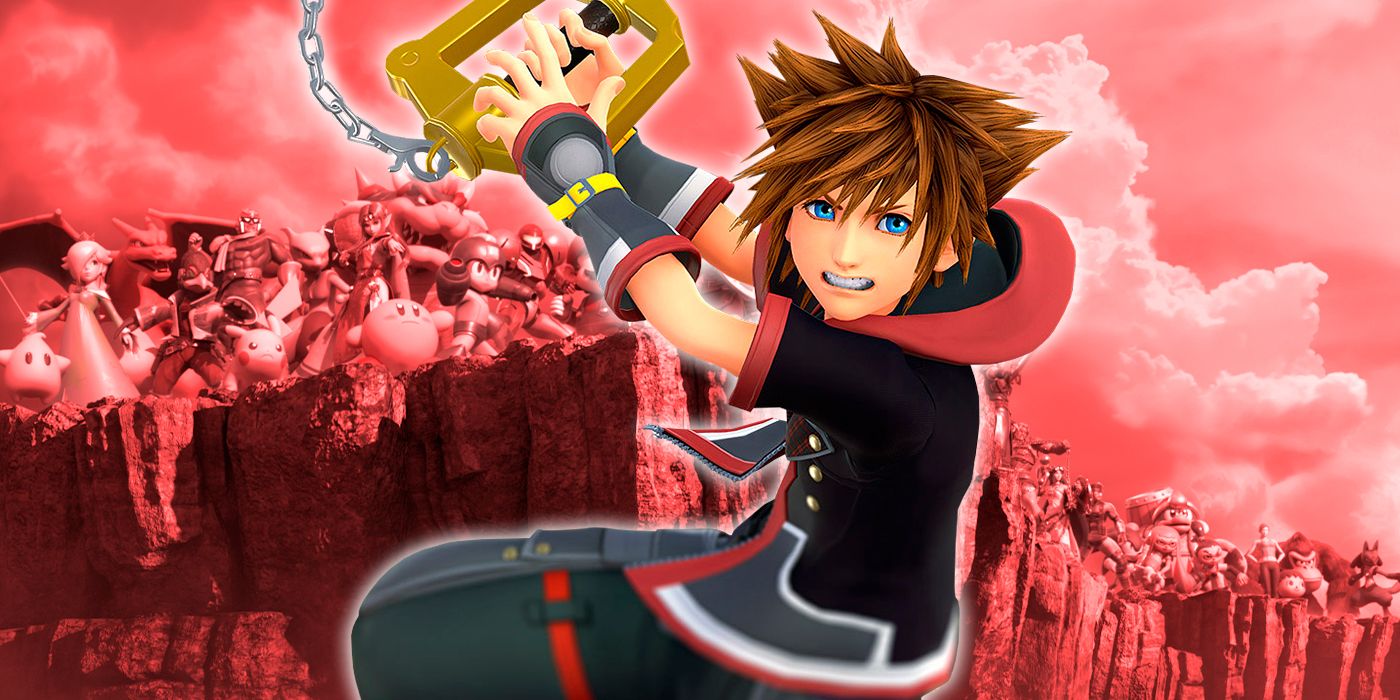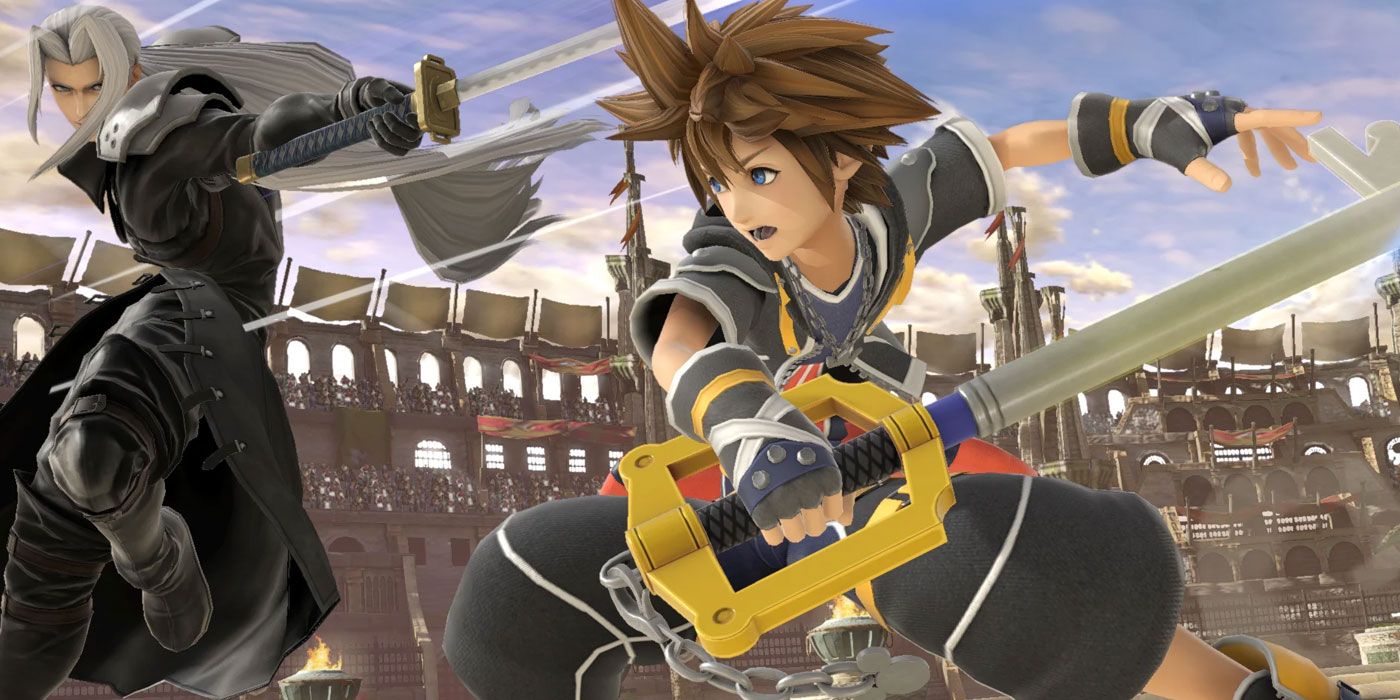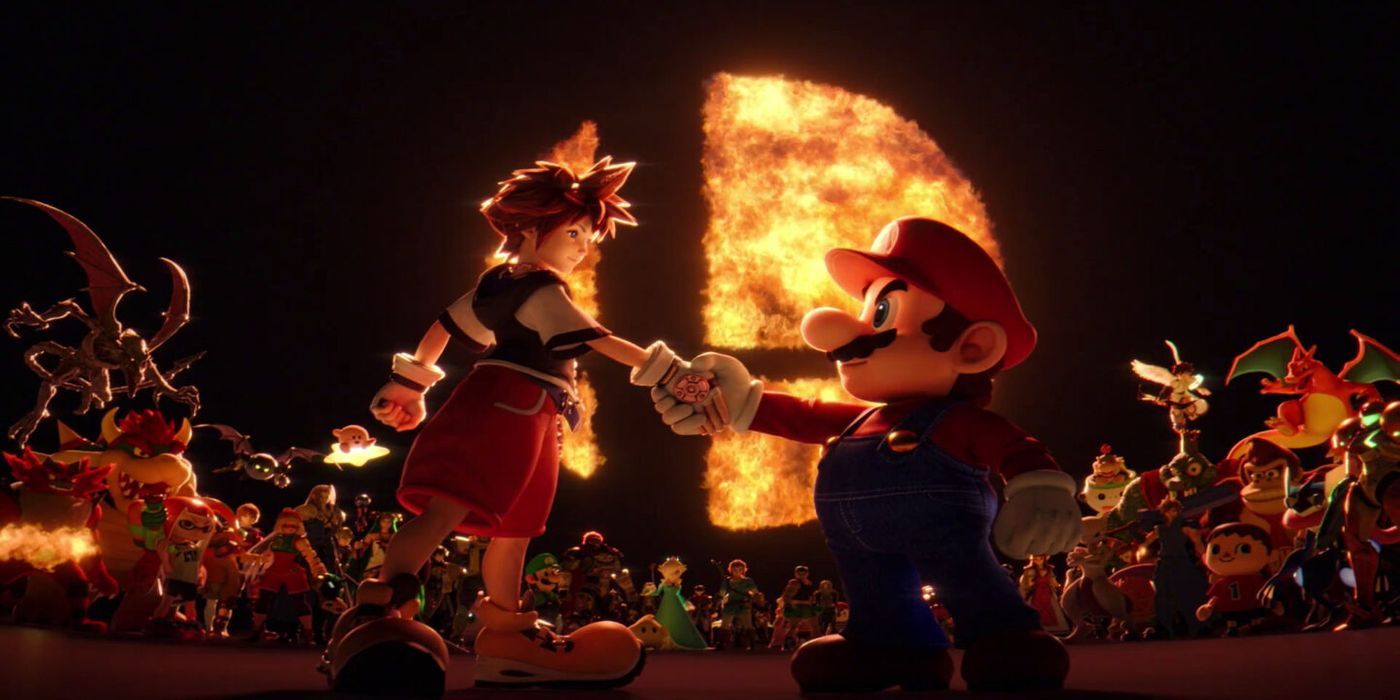After months of speculation regarding the identity of the final Super Smash Bros. Ultimate guest fighter, Nintendo has confirmed that Kingdom Hearts' fan-favorite protagonist Sora will be joining the popular fighting game on Oct. 18. With game director Masahiro Sakurai acknowledging that Sora's addition is one that fans have been clamoring for, response to the announcement has largely been positive. Of all the potential guest fighters suggested for inclusion to close out the acclaimed fighting game's three-year run, Sora is one that makes much more sense for the Super Smash Bros. franchise than most of his immediate counterparts on the roster.
Developed by Square Enix, Kingdom Hearts' entire core gimmick is that it serves as a crossover between the world of Final Fantasy and iconic Disney properties. Throughout all three main installments in the enormously successful franchise, Sora is partnered with Donald Duck and Goofy as the trio traverse different worlds based on popular Disney animated and live-action films to take on fiendish villains threatening all of reality. As the franchise continued, even more unexpected crossover with Disney's properties were included, with 2005's Kingdom Hearts II adding worlds and characters based on Tron and Pirates of the Caribbean.
The Super Smash Bros. franchise has had a similar trajectory to Kingdom Hearts, in regards to its crossover scope. The original 1999 Super Smash Bros. for the Nintendo 64 and its 2001 sequel for the GameCube, Super Smash Bros. Melee, were populated exclusively by Nintendo's core franchises. It wasn't until 2008's Super Smash Bros. Brawl for the Nintendo Wii that the fighting game series began to welcome in third-party video game franchises, with Metal Gear Solid's Solid Snake and Sonic the Hedgehog leading the charge. The number of third-party guest fighters would increase in 2014's Super Smash Bros. for the Nintendo 3DS and Wii U, while also adding in downloadable characters available to purchase to the franchise -- including Final Fantasy's Cloud Strife.
By 2018's Super Smash Bros. Ultimate, the fighting game series was no longer simply a celebration and jam session between Nintendo's iconic properties, with the occasional guest fighter, but a full-on celebration of the history of video games in general. Ultimate's story mode would memorably incorporate elements of third-party franchises, including an entire sequence based on Capcom's Street Fighter II and Konami's Castlevania. And with Sora, a character created for the possibility of unlikely crossovers in video games, closing out the Ultimate era after two seasons of DLC, the Kingdom Hearts protagonist's inclusion feels oddly perfect, if perhaps a bit on the nose.
Super Smash Bros. Ultimate is the pinnacle of bringing video game properties together, prohibitive licensing restrictions be damned. And just as Kingdom Hearts began squarely focused on Final Fantasy and Disney before expanding to include Pixar and Disney's live-action offerings, Super Smash Bros. has brought in more and more surprise franchises to the table. Ultimate is currently the only game where players can duke it out as characters from Tekken, Street Fighter and King of Fighters at once, much less adding Bayonetta and Mega Man to the mix. In an industry when licensing contracts have prevented something as beloved as Marvel vs. Capcom 2 from being readily and legally available, Super Smash Bros. Ultimate has reminded gamers of the joys that come with a crossover. And in a lot of ways, that joy has been the engine that has endeared Kingdom Hearts and Sora to millions worldwide for nearly twenty years.
Super Smash Bros. Ultimate is developed by Bandai Namco Studios and Sora Ltd. and published by Nintendo. It is currently available on the Nintendo Switch, with Sora available to purchase as the final guest character on Oct. 18.



